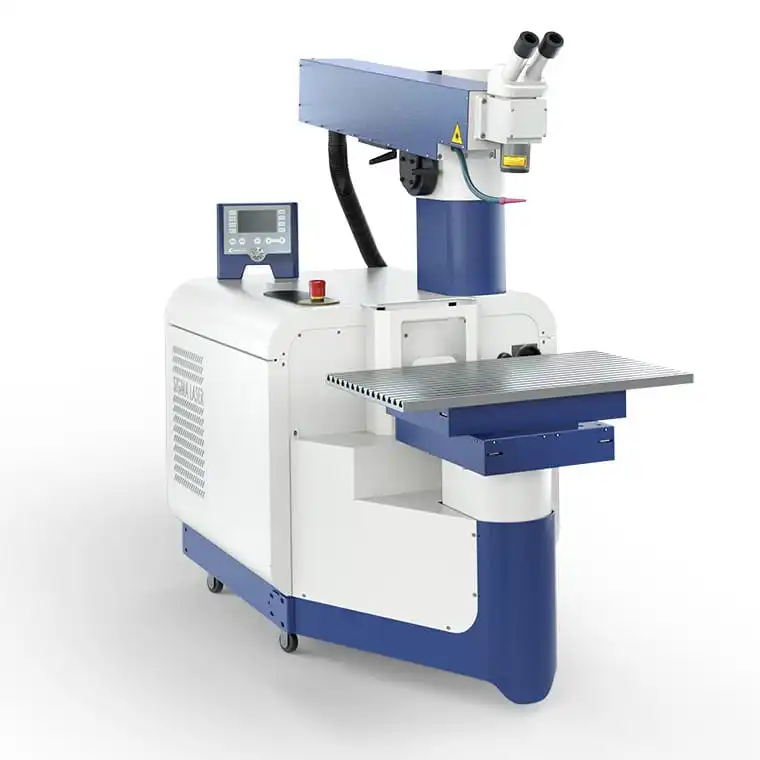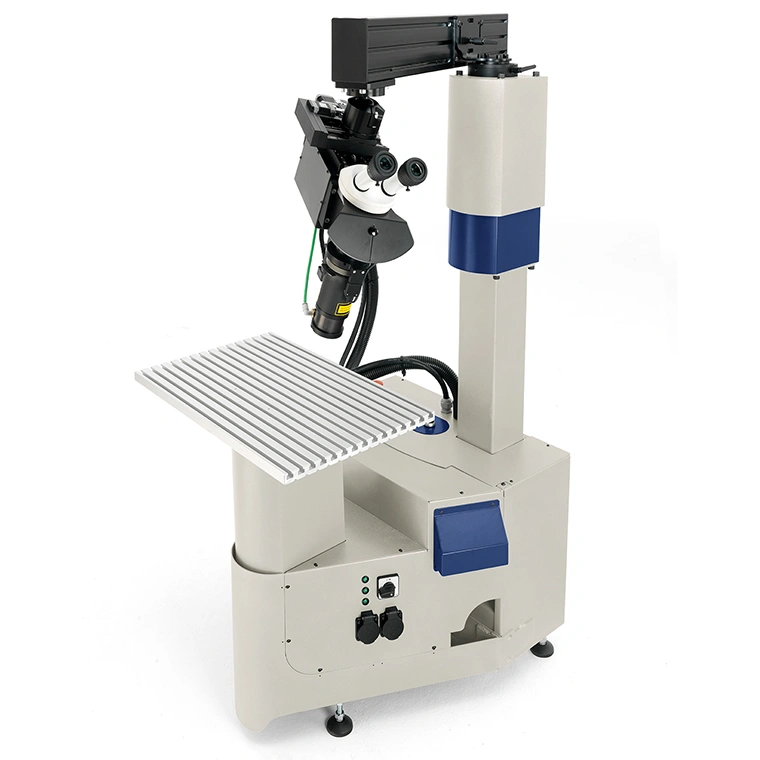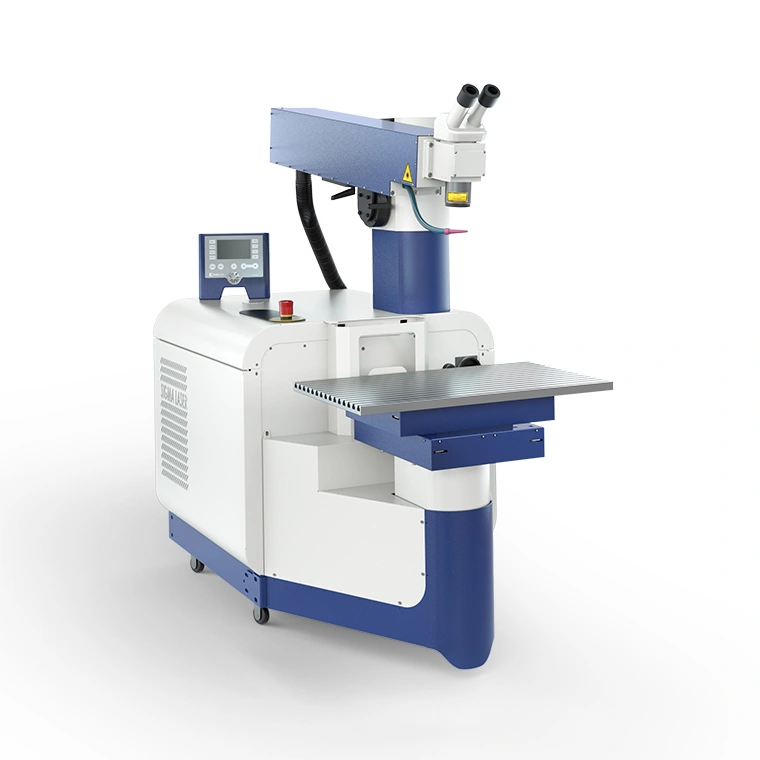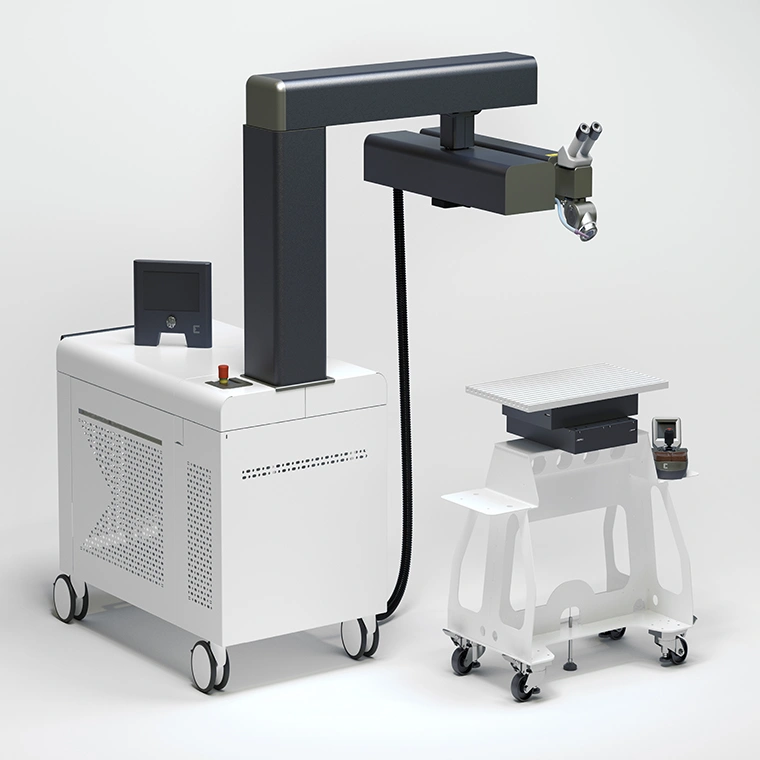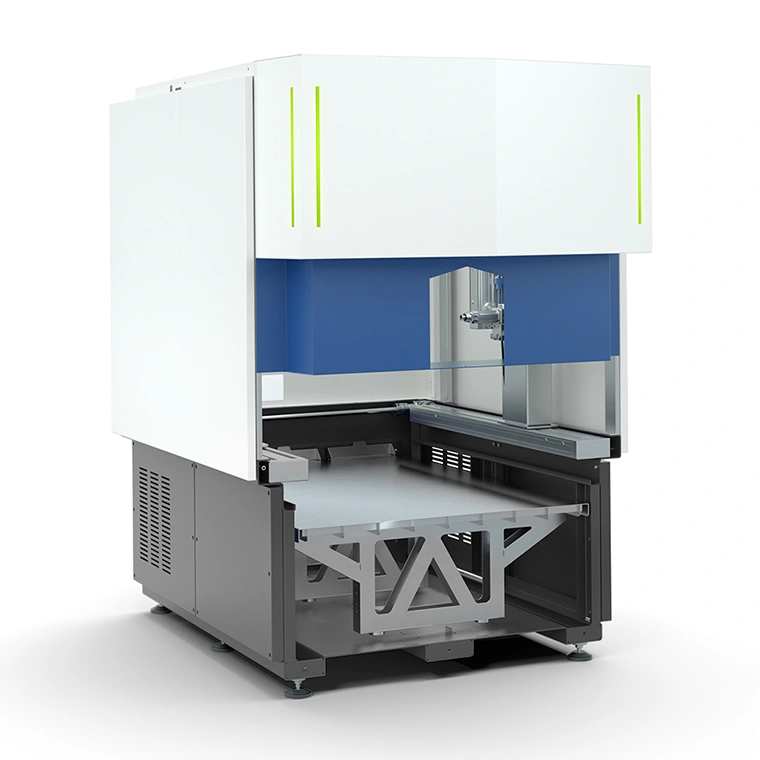Laser Solutions for Precision Tool and Moulding Industry
Tool and mould making demands extreme accuracy, strength, and minimal downtime. Sigma Laser offers high-performance laser welding, engraving, and marking systems designed to enhance the efficiency and longevity of moulds, dies, and precision tools. From fine crack repairs to deep engraving, our solutions ensure unmatched quality and productivity in your workshop.
Recommended Laser Welding Systems for Tool & Mould Applications
Selecting the right laser welding system is crucial for achieving precision, durability, and efficiency in tool and mould manufacturing and repair. Sigma Laser offers a range of advanced laser welding solutions tailored to meet the demanding requirements of the tool and mould industry — from high-precision micro-welding to heavy-duty, automated welding platforms. Below, we introduce the most suitable Sigma Laser systems designed to optimize your workflow, reduce downtime, and deliver impeccable weld quality for various tool and mould applications.
Sidanus Light
The Sidanus Light is a flagship laser welding machine engineered for maximum accuracy and versatility in tool and mould fabrication. Its four-axis platform (X, Y, Z, C) supports manual, semi-automatic, and fully automated operations, enabling micron-level precision in micro-welding tasks such as crack repair and fine-edge welding. Thanks to its minimal heat-affected zone (HAZ) and ergonomic design, Sidanus Light ensures consistent, oxide-free welds with minimal distortion — ideal for hardened steels and high-hardness alloys.
Sirius Light
For larger components and complex geometries, Sirius Light delivers unmatched flexibility with a mobile design and up to 500 watts of power. Its robust frame and swivel castors allow easy positioning around large moulds and tools. This system excels in heavy-duty tool repair and mould refurbishment where accessibility and load capacity are critical, making it a versatile choice for aerospace, automotive, and industrial manufacturing.
Siega Fibre
The Siega Fibre combines compact size with exceptional precision, designed specifically for confined or hard-to-reach areas within moulds and tooling. Featuring Twin Lamp Cavity (TLC) technology for extended service life and beam stability, this portable system is perfect for detailed engraving, surface repairs, and applications requiring ergonomic mobility in restricted environments like marine or aerospace tooling.
Sidanus Fibre
For continuous production environments demanding high power and energy efficiency, the Sidanus Fibre offers a maintenance-free Ytterbium fibre laser with up to 450 watts output. Its motorized vertical adjustment and modular design provide ergonomic operation and future-proof automation capabilities. This system is especially suited for intricate mould manufacturing, medical tooling, and industries requiring repeatable, high-quality welds with minimal energy consumption.
Sineo Fibre
The Sineo Fibre extends fibre laser technology’s advantages to mobile, four-axis laser welding, offering up to 450 watts of power and a reach of 1,830 mm. Ideal for hard-to-access mould parts, this system provides high-precision welding in aerospace, automotive, and medical sectors, ensuring flexibility and portability without compromising weld quality or control.
Simass Base Unit & Modular Components (Simass Rotate, Simass Slide)
For automated, high-throughput tool and mould production, the Simass Base Unit serves as a heavy-duty, modular welding platform. Paired with rotary modules like Simass Rotate (360° rotation for cylindrical parts) and Simass Slide (multi-axis automation for large workpieces), these systems support complex geometries and large-scale welding tasks. They enable manufacturers to scale operations while maintaining precision and reducing operator intervention.
Sigma Laser’s portfolio covers the full spectrum of tool and mould applications—from micro-welding delicate mould cavities to automating heavy industrial welds on large components. Whether you require portable systems for on-site repairs or stationary, fully automated platforms for high-volume production, Sigma Laser’s advanced technologies deliver superior weld quality, operational flexibility, and efficiency.
By choosing the right Sigma Laser system, you ensure minimal thermal distortion, exceptional repeatability, and compatibility with a wide range of tool steels and alloys, ultimately extending the life and performance of your tooling investments.
Have Questions? We’re Here to Help!
Speak with our specialists to explore the best laser welding systems for your specific industry challenges:


ApplicationsKey Use Cases in Tool and Mould Making
Laser welding technology is revolutionizing the tool and mould making industry by offering unparalleled precision and flexibility in addressing common repair and manufacturing challenges. From micro-crack repairs to complex surface texturing, laser systems enable manufacturers to enhance durability, reduce downtime, and maintain high-quality production standards. The following key use cases highlight how laser welding optimizes various critical tasks in tool and mould applications, delivering efficiency and superior results where traditional methods often struggle.
Micro-crack and Edge Repair
Laser welding enables precise, low-heat repair of micro-cracks and worn edges in steel moulds without distortion, eliminating the need for full replacements.
Mould Surface Refurbishment
Restore worn or damaged mould surfaces with minimal material loss using pulsed laser welding—ideal for expensive and complex mould geometries.
Deep Engraving of Tool Cavities
Our laser systems offer deep and durable engraving on tool cavities and mould cores for part numbering, branding, and anti-counterfeiting purposes.
Laser Texturing and Surface Patterning
Achieve consistent micro-textures and functional surface finishes to improve product release and surface aesthetics in injection moulding applications.
Hard-to-Reach Area Processing
With multi-axis and fiber-delivered laser systems, access narrow or complex areas of moulds for localized welding or marking without dismantling the entire tool.
Frequent Maintenance & Reworking
Enable fast turnaround in regular tool maintenance cycles with minimal pre/post-processing, reducing downtime and cost.
Summary: Unlocking New Possibilities with Laser Welding in Tool and Mould Making
The versatility of laser welding systems empowers toolmakers and mould manufacturers to tackle a wide range of specialized tasks with confidence and efficiency. Whether it’s repairing delicate micro-cracks, restoring intricate mould surfaces, or applying precise surface textures, Sigma Laser’s advanced solutions provide fast, accurate, and minimally invasive options. By facilitating hard-to-reach area access and reducing the need for extensive post-processing, laser welding not only extends tool life but also accelerates maintenance cycles — resulting in lower operational costs and enhanced productivity. Embracing these innovative use cases will keep your manufacturing processes competitive and your tooling in peak condition.
Choosing the Right Laser Welding System for Tool & Moulding Applications
Selecting the ideal laser welding system for the tool and mould industry is a critical decision that directly impacts product quality, operational efficiency, and long-term cost savings. Whether you are involved in mould fabrication, surface texturing, precision engraving, or repair, understanding the key factors that influence machine performance will help you make an informed choice. Here are the essential considerations when choosing a laser welding solution tailored to tool and mould applications:
1. Material Compatibility
Tools and moulds are commonly fabricated from a variety of challenging materials such as hardened tool steels (H13, P20), stainless alloys, and high-speed steels (HSS). Your laser welding system must be capable of processing these materials with minimal heat distortion, zero cracking, and excellent metallurgical stability. Look for systems optimized for high-hardness alloys and versatile enough to handle coatings or composite materials.
2. Precision and Control
Tool and mould manufacturing demand micron-level accuracy and exceptional repeatability. Important features include:
- Fine spot size control (≤ 0.2 mm) for delicate welds in tight geometries
- Adjustable pulse parameters (pulse duration, frequency, and energy) to tailor heat input
-
Multi-axis motion capabilities (X, Y, Z, and ideally rotary C-axis) for accessing complex shapes and angled surfaces
These specifications ensure flawless welding even in narrow cavities, sharp edges, or intricate tool details.
3. Power Output and Pulse Mode
Depending on the application—whether deep engraving, micro-welding, or surface texturing—the power range and pulse mode vary. Pulsed fiber lasers between 100 to 450 watts are widely recommended, offering precise energy control to prevent overheating or material damage. Advanced modulation technologies such as Super Pulse Technology (SPT) further enhance weld quality by optimizing heat input and solidification.
4. Manual, Semi-Automated, or Fully Automated Operation
Your production scale and workflow will dictate the level of automation required:
- Manual or semi-automatic stations with joystick controls are ideal for small workshops or custom, low-volume tasks. They provide operator flexibility and direct control for intricate jobs.
- CNC-controlled or 4-axis programmable systems suit high-volume production lines, enabling consistent, repeatable welds with reduced operator dependency and faster turnaround times.
5. Cooling, Safety, and Ergonomics
Efficient cooling systems (integrated or external chillers) are crucial for maintaining stable laser performance during continuous operation. Safety features such as protective enclosures with interlocks protect operators and maintain compliance with industrial standards. Ergonomic design considerations, including adjustable work tables and user-friendly interfaces, minimize operator fatigue during long shifts.
6. Software Capabilities and Integration
Modern laser welding solutions offer sophisticated software suites with:
- Intuitive human-machine interfaces (HMI) for easy operation and parameter adjustments
- Customizable welding programs and memory storage for repeat jobs
- Traceability and job logging features essential for quality assurance and audits in regulated industries
- Integration with automation systems for synchronized multi-axis control and real-time process monitoring
In the highly demanding field of tool and mould making, achieving exceptional precision, structural strength, and minimizing production downtime are critical to maintaining competitive advantage. Sigma Laser provides advanced laser welding, engraving, and marking systems meticulously engineered to meet the rigorous requirements of this industry. Our cutting-edge laser solutions enable manufacturers to repair micro-cracks, refurbish worn surfaces, and apply durable, high-resolution engravings on moulds, dies, and precision tools with unparalleled accuracy.
By leveraging state-of-the-art laser technology, our systems reduce heat-affected zones, preventing warping and distortion often associated with traditional repair methods. This leads to longer tool life, faster turnaround times, and significantly improved operational efficiency. Whether it’s intricate edge repair, deep cavity engraving for branding and traceability, or creating specialized surface textures to enhance product release, Sigma Laser’s portfolio delivers versatile, customizable options tailored to the unique challenges of tool and mould manufacturing.
With seamless integration into existing workflows and minimal post-processing requirements, our laser solutions empower workshops to maximize productivity while maintaining the highest quality standards. Trust Sigma Laser to provide reliable, precision-driven technologies that transform tool and mould manufacturing, repair and fabrication into a faster, more cost-effective, and highly repeatable process.
Why Choose Laser Welding for Tool & Mould Applications?
In tool and mould manufacturing, precision, repeatability, and minimal material distortion are non-negotiable. Whether you’re building high-performance injection moulds or maintaining precision stamping tools, the welding method you choose directly impacts part quality, tool longevity, and overall productivity.
Traditional welding techniques—such as TIG or micro-plasma welding—often fall short in these high-demand environments. They generate excessive heat, lead to deformation, and require significant post-processing. In contrast, laser welding has emerged as the gold standard for both fabrication and repair of complex moulds and tools.
Thanks to its micron-level precision, low heat input, and compatibility with hardened tool steels, laser welding enables manufacturers to meet tight tolerances and demanding design requirements—without compromising structural integrity.
How Laser Welding Elevates Tool & Mould Manufacturing
Aspect |
Conventional Methods |
Laser Welding Advantage |
Heat Input |
High, often causing warping |
Ultra-localized heat minimizes deformation |
Precision |
Limited to operator skill |
Micron-level accuracy for complex geometries |
Material Compatibility |
May not handle hardened steels well |
Perfect for HSS, Inconel, hardened steels, and more |
Post-Processing |
Requires grinding & reshaping |
Minimal finishing, reduces labor and cycle time |
Access to Tight Areas |
Challenging for fine or internal zones |
Laser beam easily reaches micro-features and deep cavities |
Repeatability |
Operator-dependent, inconsistent |
Fully programmable, repeatable results |
Structural Integrity |
May compromise base material |
Strong metallurgical bond, even under pressure |
Why Manufacturers Trust Laser Welding for Tool & Mould Work
Whether you’re producing or maintaining tooling components, laser welding offers unmatched control and performance. Here’s why top toolmakers and moulding professionals rely on it:
- Preserves original geometry – Critical for precision moulds and tight-tolerance dies
- Minimizes heat-affected zone (HAZ) – Protects adjacent features and coatings
- Supports advanced materials – Compatible with hardened, tempered, and exotic alloys
- Improves uptime – Less distortion means fewer corrections and reduced downtime
- Boosts cost-efficiency – Reduces scrap rates and extends tool service life
- Ideal for fine features – Perfect for micro-welding inserts, ejector holes, and edge repairs
Applications Across the Tool & Mould Lifecycle
Laser welding isn’t limited to repairs. It plays a strategic role throughout the lifecycle of tooling components:
- During production – Add precise features, fix machining errors, or fuse delicate parts
- During maintenance – Restore worn edges, rebuild parting lines, or correct tool erosion
- During modification – Adapt moulds to design changes without full remanufacturing
Future-Proof Your Tooling with Laser Welding
From extending the life of injection moulds to enabling high-precision adjustments in die tools, laser welding delivers unmatched accuracy, speed, and control. With minimal heat input and exceptional compatibility with tool steels, it is the ideal solution for modern tool & mould applications—whether you’re manufacturing from scratch or performing critical maintenance.
Sigma Laser’s advanced laser welding systems are designed to meet the high standards of toolmakers worldwide, providing the precision, reliability, and flexibility your operation demands.
innovationsLaser Technologies Used in Tool & Mould Industry
In the demanding field of tool and mould manufacturing, choosing the right laser technology is crucial for achieving precision, efficiency, and durability. Sigma Laser offers a range of advanced laser systems tailored specifically for the diverse applications in this industry—from fabrication and repair to marking and surface finishing.
Flash Lamp Pumped Nd:YAG Lasers
Flash lamp-pumped Nd:YAG lasers have long been the industry standard for tool and mould applications due to their proven reliability and powerful welding capabilities. These systems provide high peak power with excellent beam quality, making them ideal for precise micro-welding, crack repair, and engraving on hardened steels and complex alloys. Their versatility allows use in both manual and automated workflows.
Fiber Laser Systems
Fiber lasers represent the latest innovation in laser technology, offering superior energy efficiency, lower maintenance, and enhanced beam stability. These systems deliver consistent high-quality welds with minimal heat-affected zones, which is critical for maintaining mould integrity and dimensional accuracy. The compact design and flexibility of fiber lasers enable easy integration with multi-axis and automated platforms for complex geometries and hard-to-reach areas.
Pulsed Laser Technology
Pulsed lasers are essential for applications that require fine control over heat input and minimal thermal distortion, such as repairing delicate mould surfaces or engraving intricate tool patterns. By delivering laser energy in short bursts, pulsed systems minimize material stress and reduce post-processing needs, improving turnaround times and overall productivity.
Advanced Control Software and Automation
Modern laser systems are complemented by sophisticated control software like Sigma Laser’s Sigomatic and Sigomatic Pro, which enable precise multi-axis coordination, programmable welding paths, and real-time process monitoring. Automation not only enhances repeatability and quality but also reduces operator workload, ensuring consistent results in high-volume tool and mould production.
Why Sigma Laser? Key Advantages of Sigma Laser for the Tool & Moulding Industry
When it comes to the precision and durability required in tool and mould repair, Sigma Laser Systems deliver unmatched performance tailored to the specific challenges of the industry. Here’s why leading mould makers and repair shops trust Sigma:
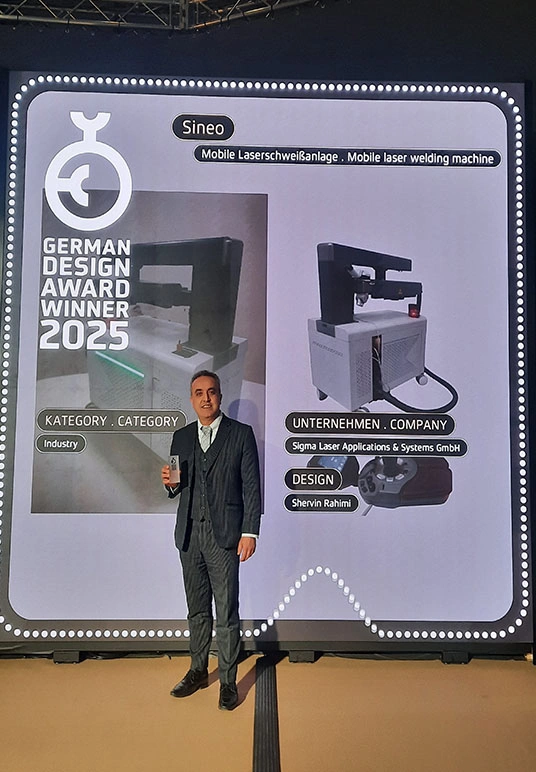
Our systems ensure consistent energy delivery for micro-welding tasks, preserving fine details and complex geometries on mould surfaces.
Advanced pulse shaping and cooling features help maintain the integrity of high-tolerance tools by avoiding thermal stress and warping.
Our multi-axis configurations allow flexible positioning and reach, even for large or deep-cavity moulds—ensuring accurate repairs in hard-to-reach areas.
Achieve clean, strong welds that require little to no finishing—saving time in re-polishing or reshaping mould components.
Whether you need a compact portable laser for on-site maintenance or a full workstation for in-house tooling departments, Sigma offers the right fit.
Easy-to-use interface with support for custom welding programs, CNC integration, and remote diagnostics for streamlined operations.
Backed by robust components, industry-tested performance, and Sigma’s dedicated after-sales service team.
With Sigma Laser, you don’t just get a machine—you get a strategic partner in enhancing tool longevity, cutting repair times, and ensuring production continuity.
We have worked for you
Laser Welding Workflows in Tool & Mould Manufacturing
Understanding the laser welding process cycle is key to optimizing production efficiency and achieving high-quality results in tool and mould applications. The following infographic outlines the typical stages involved in a laser welding workflow, highlighting how Sigma Laser systems integrate precision and automation at every step.
Workpiece Preparation
Positioning and Fixturing
Laser Parameter Setup
Welding Execution
In-Process Monitoring
Post-Weld Inspection
Minimal Finishing
Visualizing the Laser Welding Process in Tool & Mould Repair
To fully understand the efficiency and precision that Sigma Laser systems bring to tool and mould making, a clear visualization of the laser welding workflow is invaluable. The following infographic illustrates the step-by-step laser welding cycle tailored for precision repair and refurbishment of moulds and tooling components:
Initial Inspection and Assessment
Surface Preparation
Precision Laser Welding
Post-Weld Inspection
Finishing and Polishing
Final Quality Assurance
Why This Process Matters for Tool & Mould Industry
This streamlined laser welding workflow significantly reduces repair times and material waste compared to conventional methods, while delivering unmatched precision and repeatability. Visualizing these stages helps workshop managers and operators appreciate the benefits of integrating Sigma Laser solutions — from faster turnaround to superior product quality.
Including this infographic on your tool and mould industry page not only enhances user engagement but also improves SEO by addressing important keywords like “laser welding process,” “tool repair workflow,” and “precision mould refurbishment.”
Key Tips for Using Laser Technology in Tool & Mould Industry
Effective use of laser technology in tool and mould manufacturing requires attention to several critical factors to ensure precision, quality, and operational efficiency. Here are the key tips to maximize the benefits of laser applications in this demanding industry:
1. Optimize Heat Input to Prevent Distortion
Laser welding introduces minimal heat compared to traditional methods, but precise control of heat input is essential to avoid thermal distortion and maintain mould accuracy. Use pulsed laser modes and advanced pulse modulation techniques to carefully manage energy delivery.
2. Choose the Right Laser Type for Your Application
Selecting between flash lamp-pumped Nd:YAG and fiber laser systems depends on your specific needs, such as material type, thickness, and required precision. Fiber lasers are preferable for energy efficiency and minimal maintenance, while Nd:YAG systems excel in high-power, heavy-duty tasks.
3. Leverage Multi-Axis Control for Complex Geometries
Tool and mould components often have intricate shapes and hard-to-reach areas. Employ laser systems with multi-axis movement and swivel optics to access all weld locations without dismantling parts, increasing productivity and reducing setup time.
4. Use Programmable Software for Consistency
Automation software like Sigomatic enables repeatable, programmable welding paths, reducing operator dependency and human error. This leads to consistent high-quality welds, essential for serial production and complex repair jobs.
5. Maintain Clean Surfaces Before Welding
Surface preparation is critical. Ensure mould and tool surfaces are clean, free from contaminants, oils, and oxidation to achieve optimal laser absorption and strong weld bonds.
6. Monitor and Maintain Equipment Regularly
Regular calibration and preventive maintenance of laser equipment, including optics and cooling systems, ensure stable performance, reduce downtime, and extend the system’s lifespan.
7. Train Operators Thoroughly
Laser welding requires skilled operators familiar with system controls and safety protocols. Investing in comprehensive training improves process reliability, safety, and overall efficiency.
FAQsFrequently Asked Questions about Laser Welding In Tool and Molding Industry
If you’re working in the tool and mould-making industry and considering laser welding as a solution, you may have some questions. Below, we’ve answered the most common inquiries from engineers, toolmakers, and production managers who want to improve repair precision, extend mould life, and reduce downtime using Sigma laser welding systems.
Laser welding offers unmatched precision, minimal heat-affected zones, and high-quality welds with minimal distortion—making it ideal for delicate mould surfaces and detailed repairs.
Yes. Sigma’s laser welding machines are capable of handling a wide range of tool steels including H13, P20, and stainless steel, ensuring strong and durable welds.
For most tool and mould repair tasks, a 220W laser power is sufficient. Sigma Laser offers customized configurations to match your exact needs.
Absolutely. Sigma’s systems support micro-welding with spot sizes as small as 0.2 mm, ensuring precision repairs without compromising the mould geometry.
Laser welding offers better control, less heat input, and reduced post-processing. It eliminates common issues like warping and excessive grinding associated with TIG welding.
Yes. Sigma’s modular workstation designs allow for easy integration and automation within existing manufacturing workflows.
Sigma Laser provides full training for operators, along with after-sales technical support and remote diagnostics to ensure optimal system performance. Also including the training as laser safety expert in accordance with Germany regulatory obligations.
Educational Resources & Related Articles
To help you maximize the benefits of laser welding technology in tool and mould manufacturing, we offer a selection of expert resources and insightful articles. Whether you’re looking to deepen your technical knowledge, stay updated on industry trends, or explore practical tips, our curated content covers all key aspects.
Recommended Reading:
-
Comprehensive Guide to Laser Welding in Tool Repair
Explore the fundamentals and advanced techniques of laser welding specifically tailored for tool and mould refurbishment. -
How Laser Engraving Enhances Mould Traceability and Anti-Counterfeiting
Learn how precision laser marking adds value through durable, high-resolution engravings on tooling components. -
Comparing Laser Welding vs. Traditional Repair Methods
Understand the key advantages of laser welding over conventional processes in terms of precision, heat management, and productivity. -
Optimizing Laser Parameters for Hard-to-Reach Areas
Discover strategies for effectively welding complex geometries using multi-axis laser systems and advanced optics. -
Maintenance Best Practices for Laser-Welded Tools and Moulds
Keep your equipment performing at its best with recommended cleaning, inspection, and servicing tips.
Video Tutorials and Webinars:
-
Live Demo: Laser Welding of Injection Mould Components
Watch our expert technicians demonstrate precision welding and parameter setup. -
Webinar: Enhancing Productivity with Automation Software in Laser Welding
Get insights on integrating Sigomatic and Sigomatic Pro for streamlined workflows.
Have Questions? We’re Here to Help!
Speak with our specialists to explore the best laser welding systems for your specific industry challenges:



